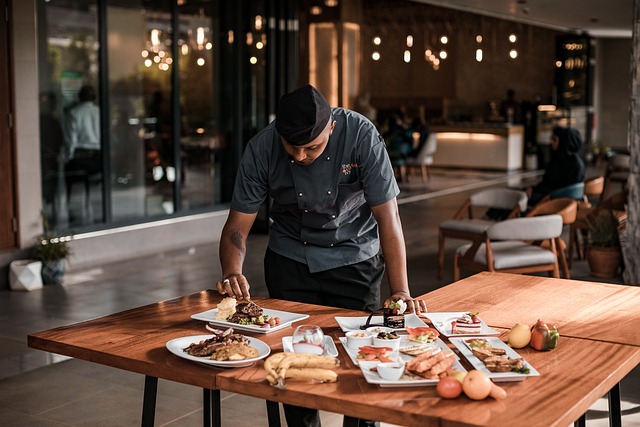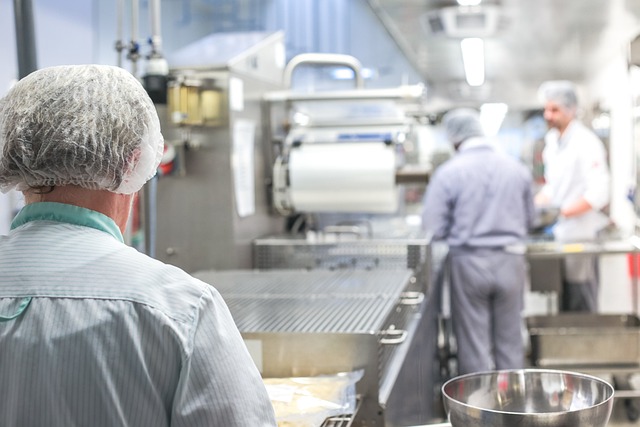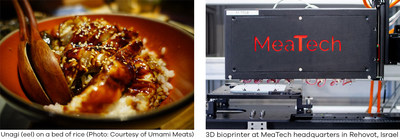A restaurant’s inventory is a huge financial investment that must be managed carefully. To be successful, restaurant business owners need to know how to make the most efficient use of their inventory. Therefore, any restaurant owner needs to learn how inventory works and how to manage it because they can save a lot of money through inventory management. Here are ways in which restaurant businesses manage their inventory efficiently.
Making Use of Periodic Automatic Replacement (PAR) Levels
PAR levels can help businesses identify the need for new inventory and replace worn-out items in a timely manner. When the PAR levels are set at an optimal level, items last longer before they need to come back and be replaced. This is good for business because it prevents inventory from being wasted. PAR levels can be monitored using an inventory management system.
The truth is, most major enterprises deal with PAR levels on a continual basis. Whether you own a business in auto electrics or a tiny diner on a very busy street corner, you will need to determine
- Minimum and maximum inventory levels
- Tracking your inventory efficiently and accurately
- A way to catalog inventory purchases
These systems keep track of inventory in real-time and help businesses take action when the PAR level indicates it is time to replace the item. In addition, using PAR levels for your inventory management will allow business managers to identify which items need replacing more often than others.
When you own a restaurant, you need to have an accurate system in place to keep your business running smoothly. By tracking your food inventory, you can ensure freshness, meet your budgets, and better prepare for busier dining shifts.
Use Inventory Control Systems
Using an inventory control system will help a restaurant manage its inventory efficiently. Inventory control systems allow businesses to track, monitor, and manage their inventory from when the item is purchased until it is sold. This works by recording all inventory purchases, storing data on the items’ history, and recording changes to individual items’ stock levels. Such recording also helps in demand forecasting as it assists in generating accurate, and meaningful forecasts.
By doing this, businesses can keep tabs on how they use their supply of an item, which allows them to make better decisions about what to stock next and how much of that item should be in stock. Furthermore, an inventory system can help businesses understand their inventory costs and profit margins over time.
An inventory control system for your business could be easier and more affordable than you think. With a proper system in place, you can
- Use existing company devices like tablets and phones to scan in inventory
- Track employee time and process payroll
- Upgrade security for your restaurant
- Provide a better HR experience for your restaurant
Label And Organize Your Inventory
Labeling and organizing your inventory will allow you to identify an item’s location easily. This will help you avoid missing items when dealing with a stock limit and makes it easier to pinpoint them if they are misplaced or missing during the day. Labeling items helps your employees know what each item is used for, which can be useful when managing inventory daily.
Assigning each item an identification number will help you keep track of items that are no longer needed and dispose of them accordingly. Labeling your inventory will help ensure that items are properly stored and that you have the necessary stock for each customer.
There are cloud-based services available that simplify this process significantly. You can assign each item a barcode. You could even assign each bin a barcode. Modern companies know what you need as a restaurant, and can provide you with the information you need at the scan of a label. Use your phone to scan a bin for more information on freshness, cost, and overall stock levels. This can really drive up your restaurant’s quality assurance.
Keep Duplicate Records of All Inventory Worksheets
Keeping duplicate records of all inventory worksheets will help you keep track of the changes made to your inventory over time and ensure that everything is accounted for. This is important for your successful inventory management because it allows you to understand better where things are and how much stock is left in any given location. Keeping this kind of record in a simple-to-use format can even simplify your life when doing taxes.
Restaurant businesses can manage their inventory efficiently by using inventory management software. These software programs help restaurants manage their inventory by tracking, monitoring, and updating information on every item they have in stock. These programs also allow business owners to monitor the usage of items and set PAR levels for certain items. This is useful because it helps them identify items needing replacing at a specific time and how much stock to keep on hand for those items.
Use Inventory Counts
Using inventory counts will help a restaurant manage its inventory efficiently. This works by tracking the number of items in stock and checking that number against the number of items ordered. Accurate information on your stock will allow you to make better decisions about what to order and when to reorder because you’ll know exactly how much of each item you have on hand. This will also help prevent your inventory from running out, making you miss out on sales and lose money.
Inventory management is an essential part of any restaurant business. Without proper inventory control and management, restaurants will struggle to produce quality food for their customers. Therefore, businesses must stock enough items to meet their target market demand. With the help of software systems, a business can manage its inventory efficiently and have a much more profitable business.
Remember that these days service providers have you, the restaurant owner in mind. You can implement a very simple to use, and effective system to ensure a better dining experience for your customers. You can track inventory, set stock on auto order, and even manage employee payroll and schedules all from a single provider. You can take back control over your restaurant business for better profits and a finer dining experience.



 How to7 years ago
How to7 years ago


 More4 years ago
More4 years ago


 More6 years ago
More6 years ago


 Interview4 years ago
Interview4 years ago


 Other Internet Tech6 years ago
Other Internet Tech6 years ago


 More6 years ago
More6 years ago


 Business Ideas6 years ago
Business Ideas6 years ago







